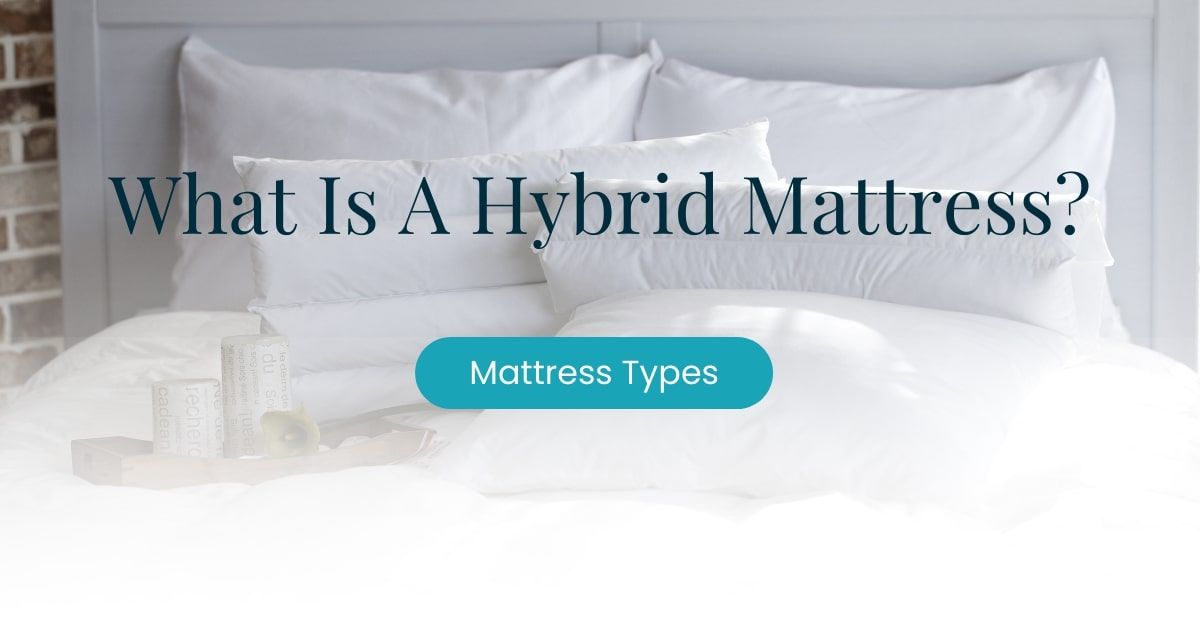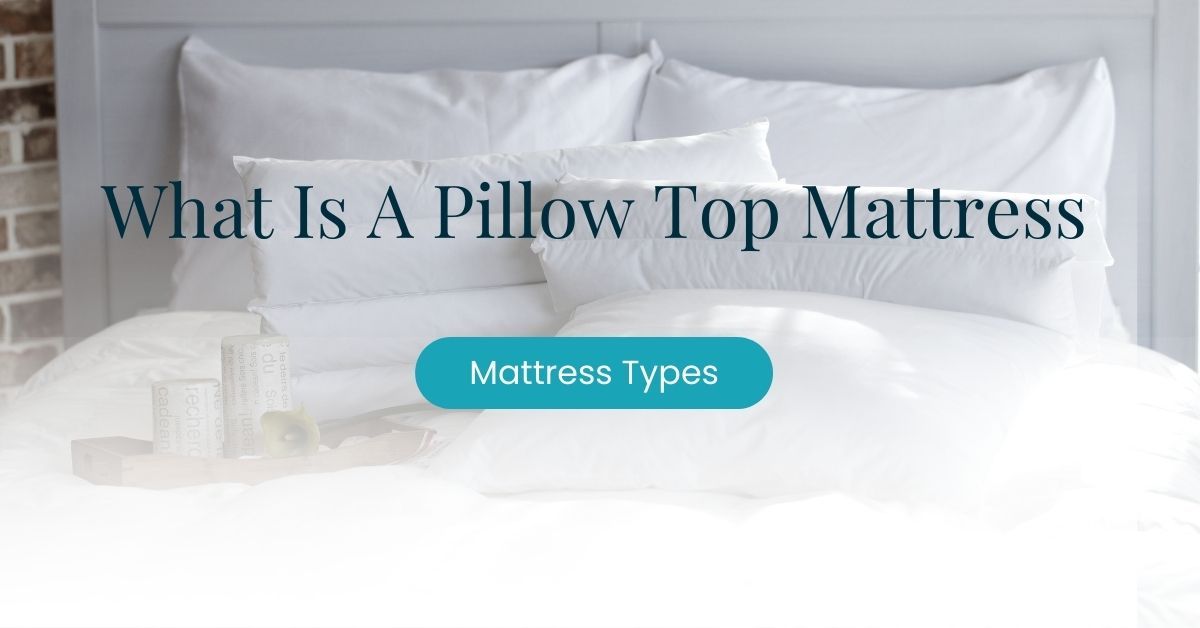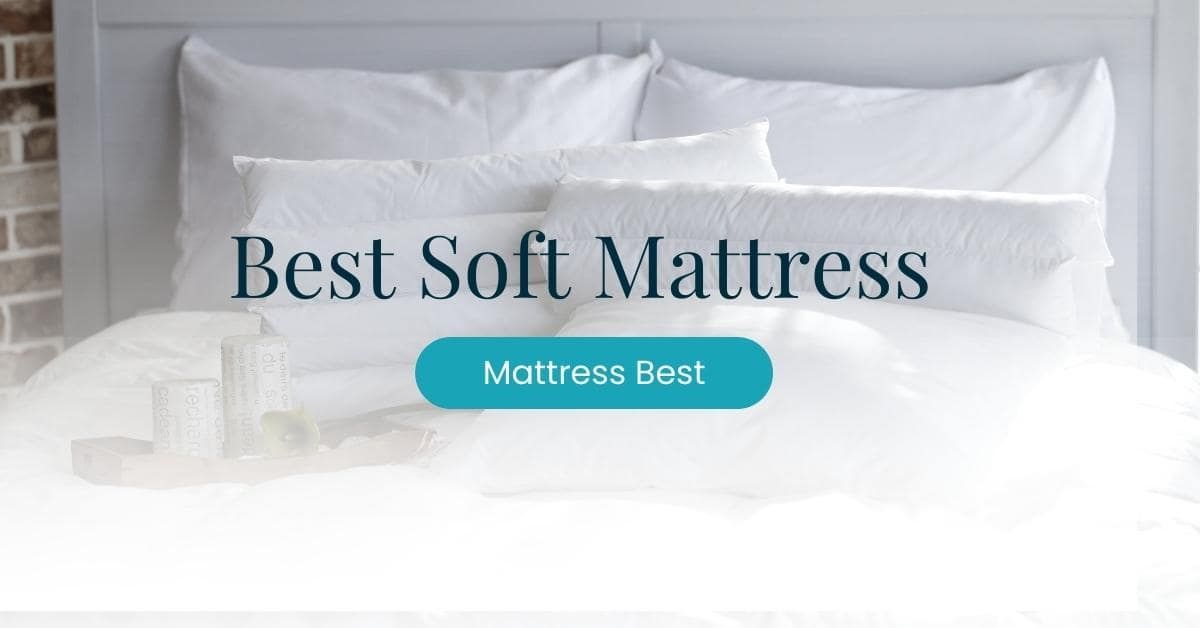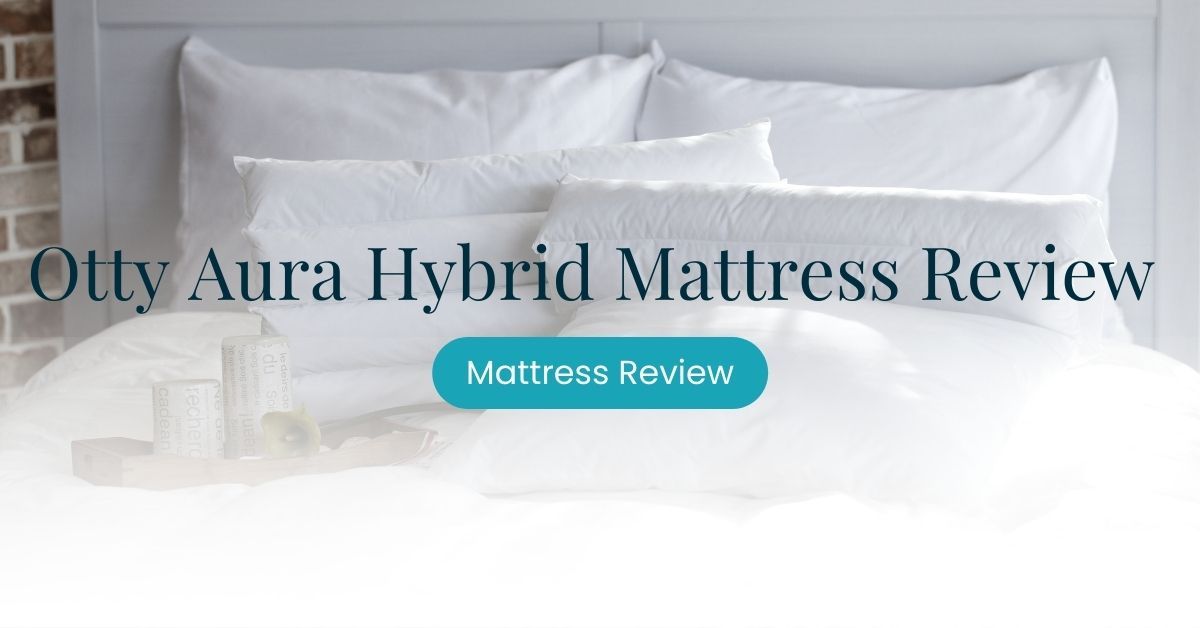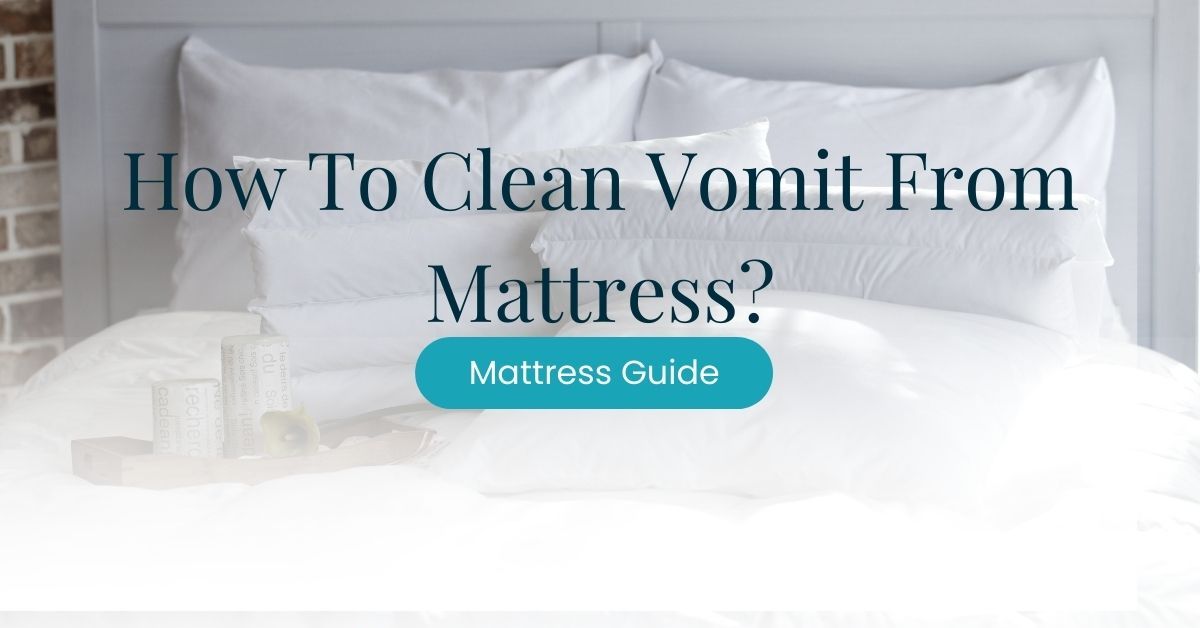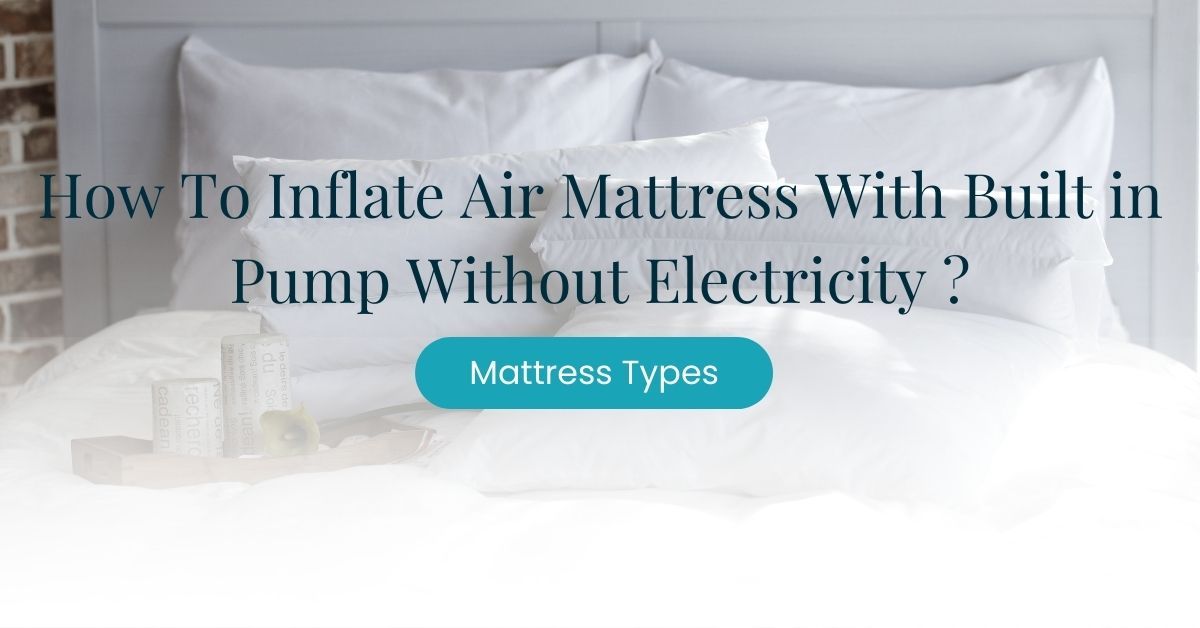You’ve probably heard of hybrid mattresses while browsing for a new mattress. But what is a hybrid mattress?
We understand if you’re not up to date with the trends in the mattress industry. But buying a mattress that suits what you need is a major decision one has to make. Mattresses are expensive, and you spend over ⅓ of your life sleeping on one.
From its name, a hybrid mattress combines foam and a spring mattress components and features. When we say foam, this can also include:
So, if you like the support a spring mattress provides but want the comfort that a foam mattress provides, then a hybrid mattress may be for you. You get the best of both worlds, but it’s important to consider the mattress firmness and your sleeping position.
If a hybrid mattress has intrigued you, we’ve prepared a list of everything you need to know. From how hybrids are constructed to who they’re best for!
What are the Components of a Hybrid Mattress?
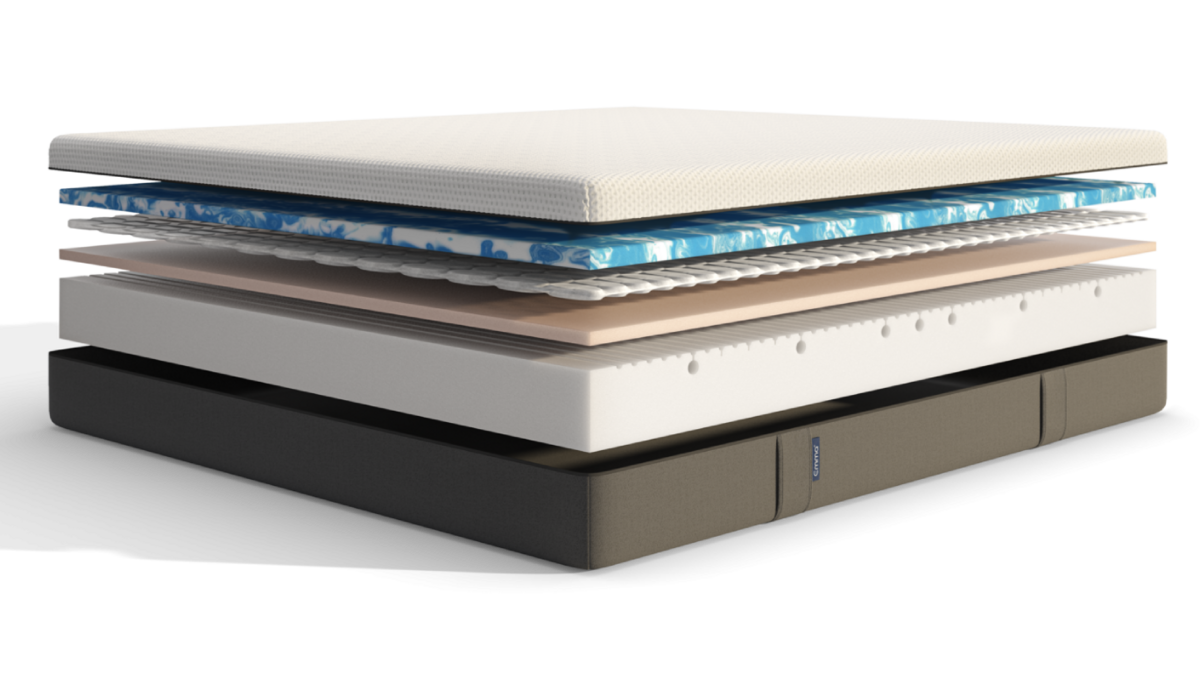
While multiple foams can be used, the springs and foam work together to deliver a blend of pressure-relieving comfort and durable support. They’re made for people who want the support of innerspring and yet the comfort of foam.
Let’s look under the cover of a hybrid mattress and see how the best properties of a foam and spring mattress combine to create dreamy comfort. A hybrid mattress typically consists of four components: pillow top, comfort layer, support core, and base layer.
- The Pillow Top: while only available on select hybrids, a pillow top layer is a 1-2 inch layer placed on top of the comfort layer. It helps to provide additional cushioning and years to your mattress.
- The Comfort Layer: If there is no pillow top, as explained above, the comfort layer is the layer you’ll sleep on. It’s made up of common materials for mattresses like (gel) memory foam and latex. It’s normally 3 to 4 inches deep and provides a sleeper with a good night’s sleep.
- The Support Core: The support core layer is the tallest and largest layer out of a mattress and regularly measures 7 to 8 inches deep. Coils wrapped in fabric pockets help with spinal support and enhance breathability throughout the mattress.
- The Base Layer: This bottom layer is the one that helps to provide stability and rigidity to the mattress. Without it, the layers above would move around, causing structural integrity issues.
Benefits of a Hybrid Mattress
Choosing the best hybrid mattress that suits your needs can be daunting. Hybrid mattresses have risen in popularity due to sleepers’ getting the best of both worlds. We’ve also listed more benefits of hybrid mattresses below:
Balanced comfort and support
Hybrid mattresses are among the most comfortable mattress types on the market due to technological advances compared to more traditional mattresses. Whether memory foam, cooling gel, or latex, the foam layer adapts to your shape and provides a comforting sensation to your mattress.
The comfort layer offers the sleeper genuine comfort when combined with the sturdy pocket springs. Pocket springs help to provide firm support for common pressure points such as:
- Shoulders
- Hip
- Knees
- Neck
Cool sleep
Foam mattresses, especially memory foam mattresses, tend to retain body heat, making you sleep hotter than usual and causing night sweats.
If you’re a hot sleeper, then regulating your temperature is necessary as it may cause bad sleep. The top layer of your bed should be cool to the touch.
Hybrid mattresses utilise the airflow offered by the spring support layer to help keep you cool before and while you sleep. In some hybrid mattresses, the top layer consists of gel-infused foam that also aids in dissipating body heat. If you’re a super hot sleeper and cooling features are a top priority, check out our comparison of hybrid vs gel mattresses.
Pressure relief
Pressure and pain can make getting a good night’s sleep difficult. A hybrid mattress is essentially the best of both worlds when it comes to a mattress.
It helps to relieve pressure from your body’s contact points with the mattress and potentially leads to less aches and pains. Common contact points with your mattress where pressure drives through them causing pain include:
- Neck
- Shoulders
- Hip
- Knees
The foam layers help to contour the sleeper’s body and are considered less ‘responsive’ than innerspring mattresses. Innersprings tend to be firmer, but also have better breathability as hot air can escape the mattress.
The innerspring also gives better responsiveness, if you ever feel “stuck in bed” on memory foam then consider springs. It also allows for more effortless movement and due to it’s responsivity it means the sleeper can change positions – great for combo sleepers.
Suitable for all sleeping positions
Here’s yet another benefit of hybrid mattresses, and this is that they’re great for pretty much all sleeping positions. We covered combo sleepers above, so what about the others?
- Side sleepers will appreciate how the foam layer relieves pressure from their hips and shoulders.
- Back sleeper will enjoy innerspring coils which provide firmer support helping support your lower back and promoting spinal alignment.
- Stomach sleepers should look for a hybrid a layer that’s thinner compared to others. THey should opt for a sturdier support layer made of springs which helps to relieve pressure in their midsection, hips and lower back.
Motion Isolation
Motion isolation is crucial when you plan to share your bed with a partner, pets, or children, especially if one is a light sleeper. Due to the combination of foam and pocket springs, hybrid mattresses are ideal for light sleepers. They’re far less disruptive than standard spring mattresses when getting up at night or changing sleeping positions.
A mattress with individual or pocketed springs helps to limit motion transfer since they are not connected.
Durable
Another advantage of hybrid mattresses is that by combining both innerspring and foam layers you’re making the mattress more durable. How? The foam layer protects the springs from compromising the top upholstery of the mattress, and the springs help the foam keep it’s shape.
- Innerspring mattresses lifespan is generally around the five to seven year mark.
- Memory foam mattresses usually show signs of degradation after six to eight years.
- A big benefit of natural latex mattresses is they can have a lifespan of up to 10 years.
Because hybrid mattresses contain both innerspring and foam, they can last anywhere from six to eight years. The rough timeframe depends on the materials’ quality and the owner’s care and maintenance.
Versatile
There are a variety of hybrid mattresses with different constructions to help tailor it to your sleeping style.
For example, you can choose from different combinations of latex foam, memory foam, or polyfoam for the comfort layers, depending on your priority i.e. firmness, breathability, comfort.
You can also add a pillow top or quilted cushioning for the top layer.
Edge support
The structural integrity of a mattress’s perimeter is called ‘edge support’. If you have owned a foam mattress before, you’ll know the edge support falls short in this area.
On the other hand, the structural spring system of hybrid mattresses provides exceptional edge support. The edges offer more pushback force than foam mattresses due to the springs within.
This helps if you weigh more than 100kg+ (230+ pounds) as you won’t feel like you’re falling out of bed when perching on edge. This also means a larger sleeping surface area for couples sharing a bed since you can sleep up to the edges.
No poking spring
Unlike traditional spring mattresses that poke out springs as they wear out, the hybrid mattress’ structure makes that impossible even as they age. This is because of the comfort layer (mainly foam) above the support core where the springs are located.
Does A Hybrid Mattress Need A Boxspring?
First of all, what exactly is a box spring, and what is it for? Box springs are made out of solid wood or metal frames packed with wire coils. Their purpose is:
- To provide support for the mattress
- To improve ventilation
- To absorb shock and protect the mattress from shock
- To lift the mattress to a higher position
When most mattresses were made with springs, box springs were almost essential. Spring mattress needs extra support and something to absorb the shock from the bouncing.
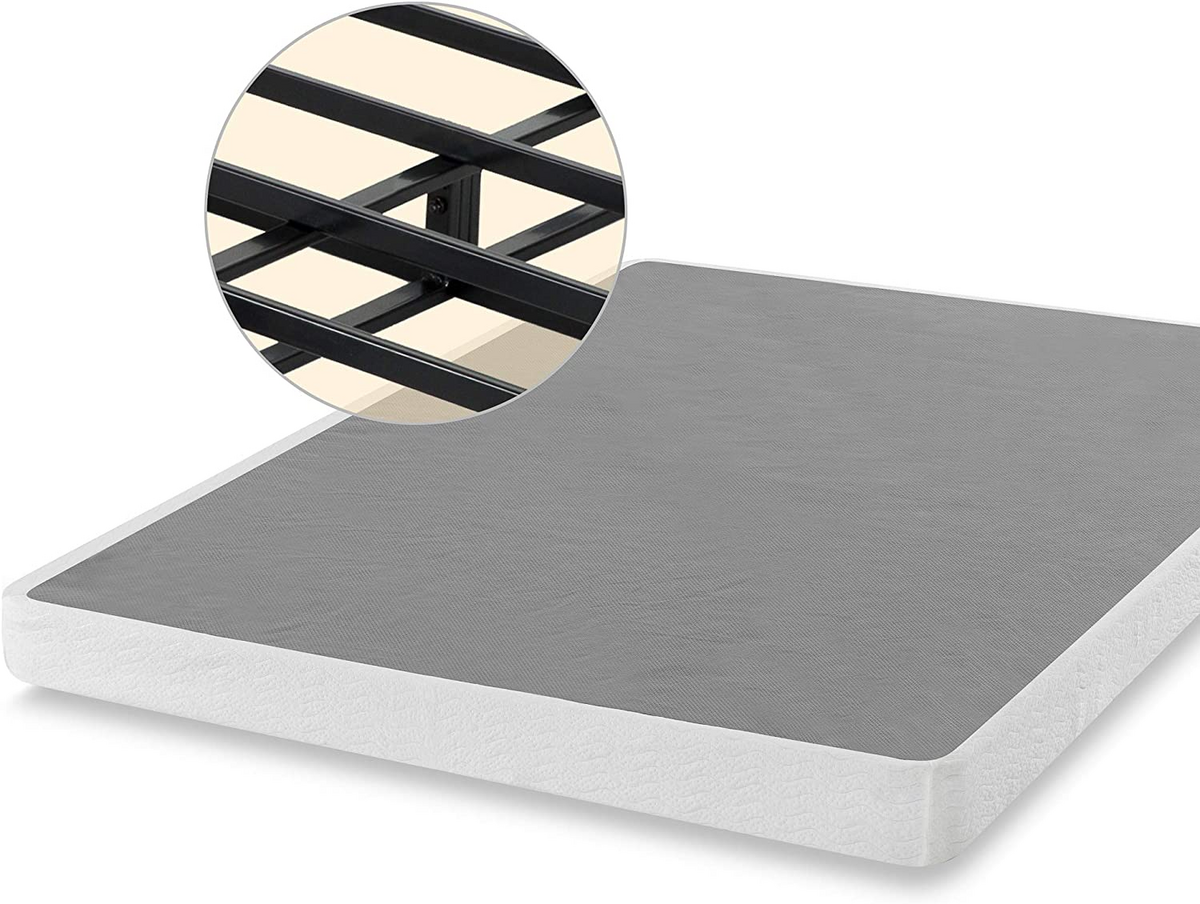
On the other hand, memory foam, latex, and hybrid mattresses don’t require the same amount of stress absorption as spring mattresses. The materials used to make them are already shock absorbent. So, no, installing a box spring when using a hybrid mattress is unnecessary.
You can also check with the manufacturer’s manual if using a box spring is recommended or if they recommend another mattress base per the warranty conditions.
How long do hybrid mattresses last?
A hybrid mattress’s durability depends on the density of the foam used in the comfort layer.
The general rule in the mattress industry is that the higher the density of the foam is, the more durable the mattress is. This is the same with the cost: the higher the density, the more expensive it is.
Hybrid mattresses manufacturers like Emma, Simba, and DreamCloud offer a 10-year warranty on their hybrid mattresses. These mattress brands are designed to last 10 years when following warranty conditions. If properly cared for, they can even last longer.
Do hybrid mattresses sag?
Since hybrid mattresses are composed of foam and springs, the top layer of foam will be subjected to wear and tear from the direct weight first.
Hence, the springs in the support layer shouldn’t lose tension until the foam layer is significantly worn out. It is as if there are two layers of defence before sagging.
Therefore, hybrid mattresses don’t sag easily, especially compared to regular foam or spring mattresses.
Are hybrid mattresses better than memory foam?
Memory foam and hybrid mattresses have comfort systems to relieve pressure and limit motion transfer. In fact, some hybrid mattresses utilise memory foam as their comfort layer.
The main difference between a pure memory foam mattress and hybrid mattresses is their support core. While most memory foam mattresses have a high-density polyfoam core, hybrid mattresses have a coil system as the core layer.
But what does this mean? Polyfoam core performs better in motion isolation and noise control. In contrast, the coil system core has better edge support, bounce, and breathability.
So, are hybrid mattresses better than memory foam? Yes, a hybrid mattress is better than pure memory foam in breathability, bounce, and edge support. But if you’re a light sleeper and don’t mind the extra warmth, you can consider buying a pure memory foam mattress.
Is a Hybrid Mattress the best for you?
Now that you’ve learned the benefits of a hybrid mattress, we should at least consider its only drawback. Hybrid beds are relatively more expensive than other types of mattresses.
Those numerous benefits don’t come cheap, but they could be worth paying for. After all, investing in a night of quality sleep is essential. Sleep is a crucial part of our health, and quality sleep will positively affect our overall health.
So, if you’re a sleeper who:
- Wants balanced cushioned comfort and firm support
- Wants to sleep cool
- Sleep in different positions
- Is a light sleeper who shares a bed
- Needs edge support
Then, a hybrid mattress would be a perfect match for you.
3 Sources
- Okamoto-Mizuno, K., & Mizuno, K. (2012). Effects of thermal environment on sleep and circadian rhythm. Journal of physiological anthropology, 31(1), 14.
https://www.ncbi.nlm.nih.gov/pmc/articles/PMC3427038/#:~:text=The%20stereotypical%20effects%20of%20heat,affects%20the%20mechanism%20regulating%20sleep. - Gerhart, J. I., Burns, J. W., Post, K. M., Smith, D. A., Porter, L. S., Burgess, H. J., Schuster, E., Buvanendran, A., Fras, A. M., & Keefe, F. J. (2017). Relationships Between Sleep Quality and Pain-Related Factors for People with Chronic Low Back Pain: Tests of Reciprocal and Time of Day Effects. Annals of behavioral medicine : a publication of the Society of Behavioral Medicine, 51(3), 365–375.
https://www.ncbi.nlm.nih.gov/pmc/articles/PMC5846493/ - Medic, G., Wille, M., & Hemels, M. E. (2017). Short- and long-term health consequences of sleep disruption. Nature and science of sleep, 9, 151–161.
https://www.ncbi.nlm.nih.gov/pmc/articles/PMC5449130/


